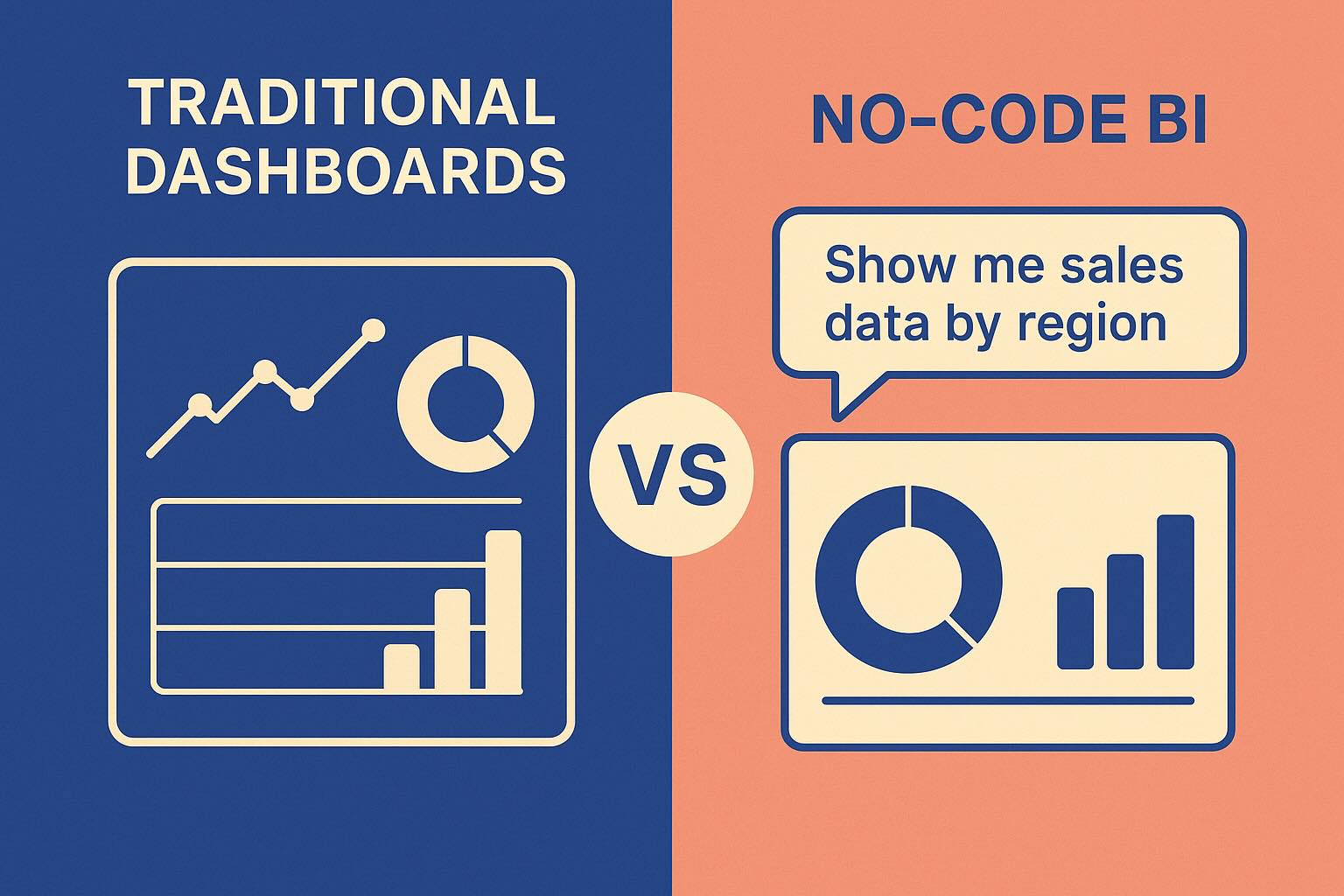Blog
June 21, 2025
Post Summary:
In today’s data-driven world, being able to analyze information quickly and act on it efficiently is no longer a luxury — it’s a competitive necessity. Whether you're leading a fast-paced product team, managing operations, or launching campaigns, the ability to access and interpret data in real-time can significantly impact your ability to make informed decisions. Historically, traditional business intelligence (BI) tools like Tableau, Power BI, and Looker have been the go-to for visualizing and interpreting data. But the landscape is changing. In recent years, no-code BI platforms have emerged as powerful alternatives, promising faster insights, easier adoption, and broader accessibility across teams. So, which option truly empowers fast-moving teams to succeed? Let’s break it down.

Traditional dashboards are often robust and deeply customizable. They can pull in data from complex pipelines, connect to enterprise systems, and display nuanced metrics through tailored visualizations. For data teams, these tools offer precise control and depth.
However, that power comes with a cost.
The process of setting up a traditional dashboard usually involves multiple stakeholders — data engineers, analysts, designers, and decision-makers. A simple request like “Can we see customer retention by product category and region?” might take days to implement, especially if new data transformations or queries are needed.
Even after a dashboard is built, business users often struggle to make adjustments or ask follow-up questions without going through a data analyst. This back-and-forth creates a bottleneck, slowing down decision-making at critical moments.
For non-technical users, the learning curve can be steep. They may need to navigate SQL-based queries, custom fields, or layered dashboard logic — all of which can be intimidating or time-consuming.
Now imagine asking that same question — "Which product category had the highest revenue last month in the East region?" — and getting the answer instantly, just by typing it in plain English.
That’s the promise of no-code BI tools like Legion AI.
These platforms are redefining the analytics experience by removing the technical barriers that often stand between a question and an answer. With natural language interfaces, auto-generated charts, and AI-powered insights, no-code BI allows users to explore and understand their data without writing a single line of code.
This shift empowers marketers, product managers, operations leaders, and founders to:
The result? Shorter feedback loops, faster iterations, and more confident decision-making across the organization.
At their core, traditional dashboards and no-code BI tools aim to answer the same question: “What’s happening in our data?” But the experience of getting that answer couldn’t be more different.
Traditional BI tools offer depth, but demand time and technical expertise. They are well-suited for structured reporting, complex queries, and long-term monitoring when handled by dedicated analytics teams.
No-code BI platforms, on the other hand, offer speed and simplicity. They’re ideal for agile teams who need real-time visibility and want to test ideas, validate assumptions, or troubleshoot problems without delay. In these environments, the ability to interact directly with the data — without middlemen — becomes a game-changer.
You don’t have to choose one or the other exclusively — but you should know when to use each.
Traditional BI is a strong fit when:
No-code BI is perfect when:
Think of traditional BI as your long-term infrastructure. Think of no-code BI as your agile, front-line tool for exploration, ideation, and fast execution.
The goal of business intelligence shouldn’t just be reporting the past — it should be empowering the future. That means making data accessible, fast, and easy to act on.
With Legion AI and other no-code BI platforms, the power of analytics is no longer reserved for those with technical backgrounds. It’s now in the hands of the people who need it most — marketers optimizing campaigns, founders tracking growth, product teams watching engagement trends, and operators managing performance.
In short, it’s not about replacing traditional dashboards — it’s about giving every team the ability to ask better questions and get faster answers.